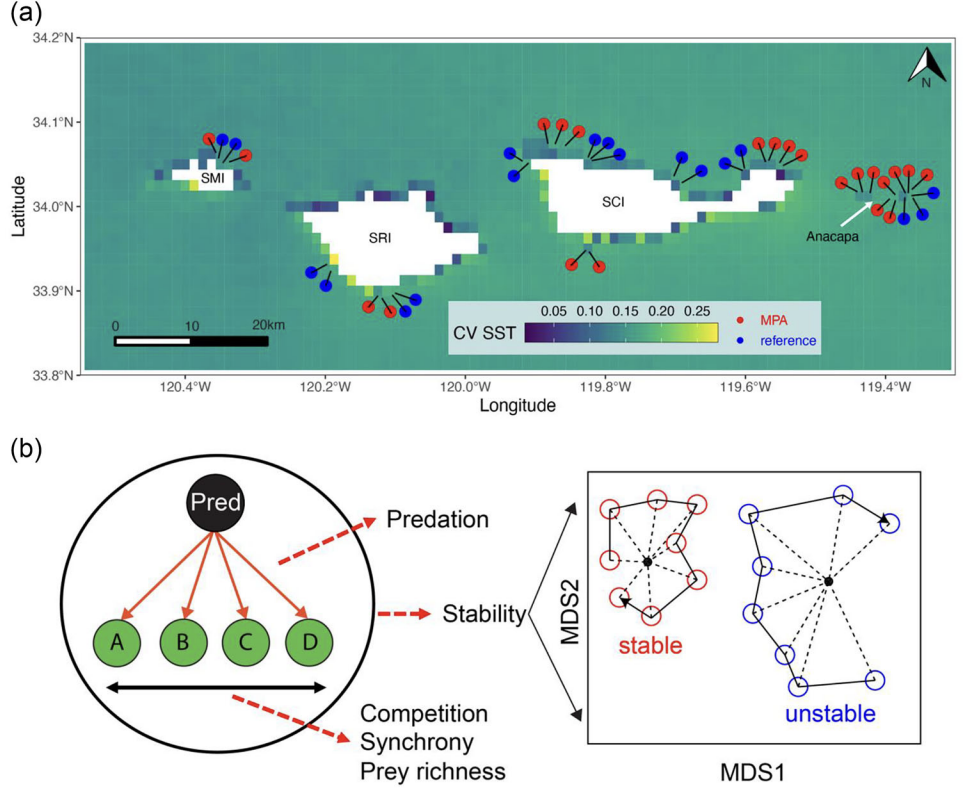Publications
Below are highlights of selected articles. For a full record of my publications, see my Google Scholar Profile.
Despite decades of research on biodiversity–stability relationships, most studies are performed within a trophic level, overlooking the multitrophic complexity structuring natural communities. To explore mechanisms underlying diversity-synchrony-stability (DSS) relationships, we applied a multitrophic framework adapted from DSS theory to investigate DSS relationships in algae–herbivore assemblages across five long-term tropical and temperate marine system datasets.
Key Findings:
Herbivore synchrony was positively and negatively influenced by algal diversity in tropical versus temperate systems, respectively, and algal synchrony was positively influenced by herbivore diversity in temperate systems.
While herbivore synchrony reduced multitrophic stability in both systems, algal synchrony only reduced stability in tropical systems.
These results highlight the complexity of DSS relationships at the multitrophic level and emphasize why more multitrophic assessments are needed to better understand how biodiversity influences community stability in nature.
Marine protected areas (MPAs) are tools used globally to promote biodiversity and mediate anthropogenic impacts. However, assessing the stability of natural ecosystems and responses to management actions is inherently challenging due to the complex dynamics of communities with many interdependent taxa.
Key Findings:
Using a 12-year time series of subtidal community structure in an MPA network in the Channel Islands (United States), we estimated and explored the putative abiotic and biotic drivers of temporal stability at community and metacommunity scales.
Athough MPAs can be effective management strategies for protecting certain species or locations, our findings for this MPA network suggest that temperature variation and underlying protection mosaic promote metacommunity temporal stability by mediating species interactions and promoting a mosaic of spatiotemporal variation in community structure of trophic networks.
Temporal variation in species trajectories across patches can provide compensation for species loss and can influence successional patterns. However, little is known about the underlying mechanisms that lead to patterns of species or spatial compensation and how those patterns may be mediated by consumer–resource relationships.
Key findings:
Mediating herbivory via habitat complexity led to spatial asynchrony in algal community trajectories, leading to metacommunity scale temporal asynchrony.
Habitat attributes can be important influencers of consumer–resource interactions on coral reefs, which in turn can increase species diversity, promote species succession, and enhance stability in algal metacommunities.





